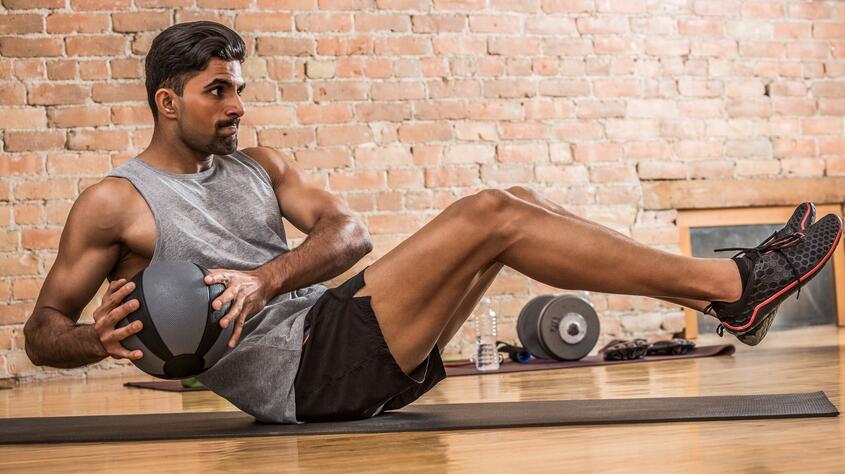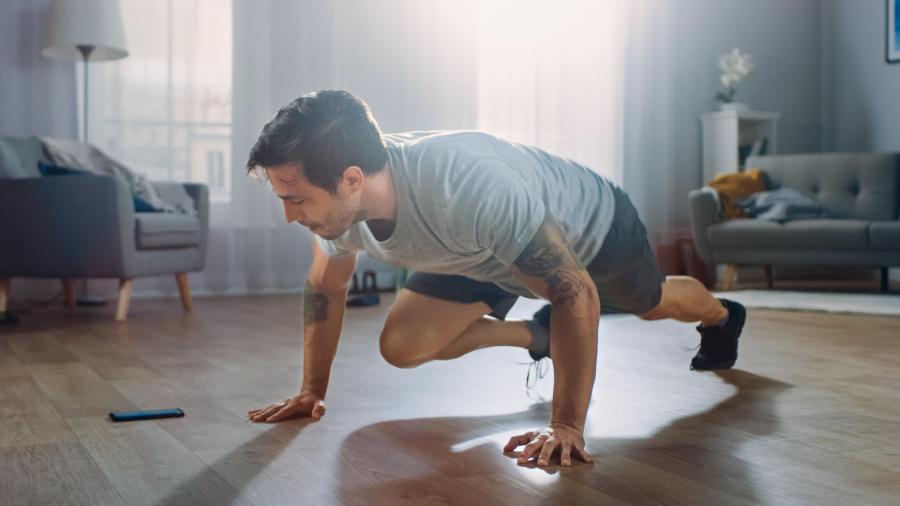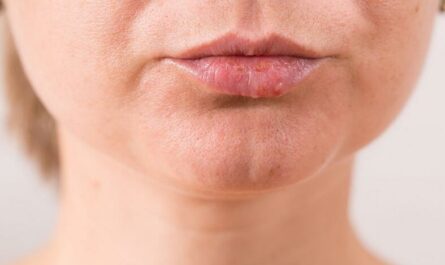Belly fat is not just a cosmetic concern; it can also have a significant impact on your overall health. Excess belly fat, especially visceral fat, is associated with an increased risk of cardiovascular disease, type 2 diabetes, and certain cancers. If you’re looking to shed those extra pounds around your midsection, you’ve come to the right place. This article will explore 5 easy exercises that burn the most belly fat.
Understanding Belly Fat
Before we dive into the exercises, it’s essential to understand the different types of belly fat and their potential health risks.
There are two main types: visceral fat and subcutaneous fat. Visceral fat is the deeper fat that surrounds your organs, while subcutaneous fat lies just beneath the skin.
Visceral fat is more dangerous as it can increase inflammation and insulin resistance, leading to various health problems.

The Fundamentals of Fat Loss
To effectively burn belly fat, you need to create a caloric deficit, which means consuming fewer calories than your body needs.
This deficit prompts your body to tap into stored fat for energy, resulting in weight loss. However, exercise alone is not sufficient; a healthy diet is also crucial for fat loss.
During exercise, your body burns calories and taps into stored fat as an energy source. Combining regular physical activity with a balanced diet promotes fat loss and supports overall health.
5 Easy Exercises That Burn the Most Belly Fat
1. High-Intensity Interval Training (HIIT)
High-Intensity Interval Training (HIIT) involves alternating between short bursts of intense exercise and brief recovery periods. This form of exercise is highly effective in burning calories and fat, including belly fat. HIIT workouts are time-efficient and can be adapted to various exercises, such as running, cycling, or bodyweight exercises.
Here’s a step-by-step guide to a sample HIIT workout targeting belly fat:
- Warm-up: Jog or cycle for 5 minutes to get your muscles warmed up and your heart rate elevated.
- Intense exercise: Perform 30 seconds of sprints. Push yourself to sprint as fast as you can during this time.
- Recovery: After the intense exercise, jog or walk for 1 minute to allow your heart rate to come down slightly.
- Repeat the intense exercise and recovery cycle: Repeat steps 2 and 3 for a total of 8-10 times. Each cycle should consist of 30 seconds of intense exercise followed by 1 minute of recovery.
- Cool down: Jog or walk for 5 minutes to gradually lower your heart rate and bring your body back to a resting state.
Remember to adjust the intensity and duration of the intense exercise and recovery periods based on your fitness level and capabilities. As you progress, you can gradually increase the intensity and duration of the intense exercise to continue challenging your body.
2. Strength Training

Strength training, also known as resistance training, is an excellent way to build muscle and burn fat. Increasing your muscle mass can enhance your body’s fat-burning capabilities, even at rest.
Engaging in compound exercises that target multiple muscle groups, such as squats, deadlifts, and push-ups, can help strengthen your core and promote belly fat loss.
Here’s a step-by-step guide to performing a squat, a compound exercise that targets multiple muscle groups, including the core:
- Stand straight with your feet shoulder-width apart and your toes pointing slightly outward.
- Engage your core muscles by pulling your belly button toward your spine.
- Lower your body by bending at the knees and hips, as if you were sitting back into an imaginary chair. Keep your chest lifted and your back straight.
- Lower yourself until your thighs are parallel to the ground or slightly below. Avoid letting your knees extend beyond your toes.
- Push through your heels and engage your glutes and leg muscles to return to the starting position.
- Repeat the squat for the desired number of repetitions. Aim for 10-15 repetitions in a set, and perform 2-3 sets with a short rest period in between.
Remember to maintain proper form throughout the exercise and avoid putting excessive strain on your knees or lower back. If you’re new to strength training, it’s advisable to seek guidance from a certified fitness professional to ensure proper technique and prevent injuries.
3. Aerobic Exercises (Cardio)
Sustained cardiovascular exercise is effective in burning calories and promoting overall fat loss. While it may not directly target belly fat, regular aerobic exercise can contribute to reducing overall body fat, including the abdominal region.
Engage in activities like brisk walking, jogging, swimming, or cycling for at least 150 minutes per week.
Here’s a step-by-step guide to a simple and effective aerobic exercise – jogging:
- Start by warming up with a few minutes of brisk walking to elevate your heart rate and prepare your muscles for jogging.
- Begin jogging at a comfortable pace, maintaining a steady rhythm.
- Keep your chest lifted, shoulders relaxed, and arms bent at a 90-degree angle. Your arms should swing naturally in sync with your leg movements.
- Breathe deeply and rhythmically, inhaling through your nose and exhaling through your mouth.
- Aim to jog continuously for at least 20-30 minutes, gradually increasing your time and intensity as your fitness level improves.
- To cool down, gradually reduce your speed to a brisk walk and continue walking for a few minutes to allow your heart rate to return to normal.
Remember to wear appropriate footwear and clothing for jogging, and choose a safe and suitable route or location for your workout.
If you have any underlying health conditions or concerns, consult with your healthcare provider before starting a new aerobic exercise routine.
4. Core-Specific Exercises

Strengthening your core muscles not only improves your posture and stability but also helps define your abdominal muscles. While spot reduction is not possible, targeted core exercises can contribute to a toned midsection.
Here’s a step-by-step guide to a classic core exercise – crunches:
- Lie on your back with your knees bent and your feet flat on the ground, hip-width apart. Place your hands behind your head, gently supporting your neck.
- Engage your core muscles by pulling your belly button toward your spine.
- Slowly lift your head, neck, and shoulder blades off the ground, curling your upper body toward your knees. Exhale as you lift.
- Hold the contraction for a moment, focusing on squeezing your abdominal muscles.
- Slowly lower your body back to the starting position, inhaling as you lower.
- Repeat the crunches for the desired number of repetitions. Aim for 10-15 repetitions in a set, and perform 2-3 sets with a short rest period in between.
Remember to avoid pulling on your neck or using your hands to pull your head forward during crunches. Focus on using your abdominal muscles to initiate the movement and keep your neck and upper body relaxed.
5. Pilates
Pilates is a low-impact exercise method that focuses on core strength, flexibility, and body awareness. It can be highly effective in toning and strengthening the abdominal muscles while promoting overall body alignment.
Here’s a step-by-step guide to a classic Pilates exercise – the hundred:
- Lie flat on your back with your knees bent and your feet flat on the ground. Place your arms alongside your body.
- Engage your core muscles by drawing your belly button toward your spine.
- Lift your head, neck, and shoulders off the ground, keeping your gaze toward your core. Extend your legs to a 45-degree angle.
- Start pumping your arms up and down in small, controlled motions while inhaling for five counts and exhaling for five counts. Repeat this breathing pattern for ten sets, totaling 100 counts.
- Focus on maintaining a stable and engaged core throughout the exercise, keeping your lower back firmly pressed into the ground.
- Gradually increase the duration and intensity of the exercise as your core strength improves.
Pilates exercises like the hundred can be modified to suit different fitness levels and abilities. If you’re new to Pilates, consider taking classes or working with a certified Pilates instructor to ensure proper form and technique.
Creating a Workout Plan That Targets Belly Fat
To maximize fat loss and effectively target belly fat, it’s important to structure your workouts strategically. Aim for a combination of HIIT, strength training, aerobic exercises, and core-specific exercises throughout the week. Incorporating variety in your workouts helps prevent plateaus and keeps you engaged.
For example, you can follow a schedule like this:
- Monday: HIIT workout (e.g., sprint intervals)
- Tuesday: Strength training (focus on compound exercises)
- Wednesday: Rest or low-intensity cardio (e.g., walking or leisurely cycling)
- Thursday: Aerobic exercise (e.g., jogging or swimming)
- Friday: Strength training (focus on core exercises)
- Saturday: Rest or yoga for recovery
- Sunday: Active rest (e.g., hiking or dancing)
Remember to listen to your body and provide ample rest and recovery days to avoid overtraining and injury.
As you progress, you can increase the intensity, duration, or frequency of your workouts. Consulting a fitness professional or personal trainer can help you design a customized workout plan tailored to your specific goals and fitness level.
Lifestyle Factors That Affect Belly Fat
In addition to exercise, several lifestyle factors play a significant role in reducing belly fat. Managing stress levels is crucial, as chronic stress can lead to increased cortisol levels. Engaging in stress-reducing activities such as meditation, yoga, or spending time in nature can be beneficial.
Here are some simple steps to manage stress and promote a healthy lifestyle:
- Practice deep breathing exercises or meditation to help calm your mind and reduce stress levels.
- Engage in regular physical activity, not only to burn calories but also to release endorphins, which can elevate your mood and reduce stress.
- Make time for hobbies and activities that you enjoy, as they can provide a sense of relaxation and fulfillment.
- Prioritize quality sleep by establishing a consistent sleep routine and creating a sleep-friendly environment. Aim for 7-9 hours of sleep per night.
- Stay hydrated by drinking enough water throughout the day. Dehydration can affect your energy levels and overall well-being.
- Incorporate mindfulness techniques into your daily routine, such as practicing gratitude or journaling, to help shift your focus away from stressors.
By adopting these lifestyle habits, you can better manage stress and support your overall health and well-being, which can contribute to a reduction in belly fat over time.
Nutrition and Belly Fat
Exercise alone is not enough to burn belly fat; a healthy, balanced diet is equally important. Certain foods can promote fat loss, while others can contribute to weight gain and belly fat accumulation.
Include nutrient-dense foods such as lean proteins, fruits, vegetables, whole grains, and healthy fats in your diet.
Here are some key nutrition tips for reducing belly fat:
- Opt for lean protein sources such as chicken, fish, tofu, and legumes. Protein helps to keep you feeling full and supports muscle growth and repair.
- Increase your intake of fruits and vegetables, which are low in calories and high in fiber, vitamins, and minerals. They help to fill you up without adding excess calories.
- Incorporate whole grains into your meals, such as quinoa, brown rice, whole wheat bread, and oats. Whole grains provide fiber and essential nutrients.
- Include healthy fats in moderation, such as avocados, nuts, seeds, and olive oil. These fats are beneficial for heart health and can help you feel satisfied.
- Avoid or limit processed foods, sugary beverages, refined carbohydrates, and saturated fats. These foods are often high in calories and offer little nutritional value.
- Practice mindful eating by listening to your body’s hunger and fullness cues. Eat slowly and savor each bite, paying attention to the flavors and textures of your food.
It’s important to note that everyone’s nutritional needs are different. Consider consulting a registered dietitian or nutritionist to develop a personalized meal plan that suits your specific goals and dietary requirements.
Tracking Your Progress
To stay motivated and monitor your progress, it’s essential to track your fat loss journey. Instead of solely relying on the scale, consider using other measures such as waist circumference, body measurements, or progress photos. Set realistic and attainable goals, and celebrate your achievements along the way.
Remember that progress may not always be linear, and there may be times when your weight may temporarily plateau. Focus on the overall trend, and don’t be discouraged by minor fluctuations.
FAQs
1. How quickly can I expect to see results?
The rate at which you see results varies depending on several factors, including your starting point, genetics, and lifestyle. With consistency and dedication, you can start noticing changes within a few weeks.
2. Can I target just my belly fat with exercise?
Spot reduction is not possible; overall fat loss is required to reduce belly fat. However, targeted exercises can help strengthen and define your abdominal muscles.
3. How long should I exercise each day to burn belly fat?
Aim for at least 150 minutes of moderate-intensity aerobic exercise or 75 minutes of vigorous-intensity aerobic exercise per week, along with strength training sessions.
4. Is it necessary to go to a gym to effectively burn belly fat?
No, you don’t need a gym membership to burn belly fat. Many effective exercises can be done at home, such as bodyweight exercises, HIIT workouts, and cardio exercises like running or cycling.
5. How does age affect the ability to burn belly fat?
As we age, our metabolism slows down, making it more challenging to burn belly fat. However, regular exercise and a healthy lifestyle can still lead to significant fat loss at any age.
References and Resources
- Harvard Health Publishing. “Abdominal fat and what to do about it.” Link to article
- Mayo Clinic. “Belly fat in women: Taking — and keeping — it off.” Link to article
- American Council on Exercise. “ACE-sponsored research: Top 3 most effective ab exercises.” Link to article
- National Sleep Foundation. “How sleep affects weight loss.” Link to article
- Mayo Clinic. “Strength training: Get stronger, leaner, healthier.” Link to article
- American Heart Association. “American Heart Association Recommendations for Physical Activity in Adults and Kids.” Link to article
- American Council on Exercise. “High-intensity interval training.” Link to article






